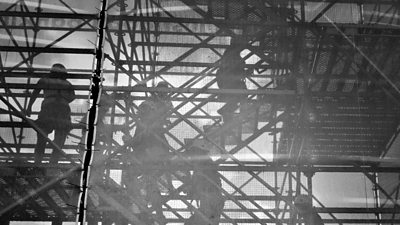This Guide covers platforms / work areas that are integral to the building’s fabric. For temporary platforms made from scaffolding (whether in situ or built to our requirements), see our Safety Guide to ‘Scaffolding (Tubular)’
What Can Go Wrong?
- Falls from height - equipment or anchor failure, collapse of structures, inadequately trained / equipped when working at height, effects of weather on access safety
- Struck by falling items – dropped or knocked off working areas
- Manual handling injury – when climbing ladders when carrying equipment
- Restricted workspace - striking low beams, maintaining static postures
- Lack of access to welfare facilities
- Stuck at height – inadequate, restricted or compromised rescue options.
Legal/�������� Requirements
- Ensure work at height is properly planned and organised
- Those involved in work at height are competent and willing to do so
- Risks from work at height are assessed and appropriate work equipment is selected and used
- The risks of working on or near fragile surfaces are properly managed
- Equipment used for work at height is properly inspected and maintained.
Control Measures
Planning for work at height
- Know the access requirements – obtain information from the venue on access requirements, including obtaining copies of risk assessments / site safety rules. Check you can you comply with these? If necessary, recce the venue. Check if there are any:
- exposed drops without adequate edge protection (i.e. top rail at least 950mm with mid-rails in-between)? Can staff be protected here – are there suitable anchor points for work restraint or fall arrest working?
- areas with incomplete or perforated flooring, or lack of footboards / parapet, where items could be dropped or knocked onto persons below?
- areas with restricted space and headroom, and have these been adequately marked / protected?
- access limitations during bad weather e.g. high winds or ice / snow making climbing ladders difficult or floor surfaces slippery?
- areas which can only be accessed using work at height equipment e.g. to climb fixed vertical ladders? And if so, are your team appropriately trained / equipped? Will the venue provide the equipment and if so, does it meet appropriate safety standards, and will there be enough for your team? See 'Riggers: Selection of' (Related Topics)
- members of the team who have a fear of heights – no-one should be asked to work at height where this could cause anxiety / stress sufficient to put themselves or others art risk of falls / being stuck at height.
- Venue emergencies – check that all of the locations where your team need to work are included in the venue’s emergency planning (e.g. fire, bomb, riot, major incident). In an emergency, can your team escape / evacuate to a safe location, or if there is a staged evacuation, can they remain in safety until escape is possible?
- Team emergencies – if a member of your team became ill or was injured when at height, can first aid be given quickly, including if provided by venue staff? If the casualty were to be incapacitated when at height, is there a suitable rescue plan in place, or would you need to bring in external rescue providers?
- Stability of gantries / walkways (permanent structures) – check that any external staircases and walkways are subject to routine structural assessment (typically annual). Obtain the safe working load of any suspended walkways or gantries
- Stability of platforms (temporary structures) – typically made of scaffolding, check that the scaffold is subject to routine safety inspection by the scaffolding company, and these are in date. Obtain the safe working load on any platforms
Managing work at height
- Safety inspection (venue) – on arrival, check access to all areas of the venue is as agreed during the planning stage. Refer any issues to your venue management contact immediately. Where required, check that permits to work have been issued prior to work at height commencing
- Safety inspection (work at height equipment) – check all work at height equipment is suitable for purpose, with certificates of conformity to EC standards, subject to routine safety inspection under LOLER (at least once every 6 months), and is issued to all who need it for either work restraint of fall arrest work. This equipment could be provided by the ��������, by the venue or contracted riggers
- Fall arrest working – if any of your team are using fall arrest equipment (e.g. to climb fixed vertical ladders, or access walkways with unprotected drops), make sure there are rescue arrangements in place, a means to initiate a quick response to an incident and enough people skilled / trained in how to perform a rescue. Lone working should not be permitted. The rescue team could be made up of team members, provided by the venue or contracted in riggers. For work at height equipment provided by the venue (e.g. travelling man-safe or ‘latchway’ systems), has a safety brief been given and the team all been issued with personal fall arrest devices?
- Equipment rigging / hauls – check that all equipment can be safely lifted to working platform levels. Secure rope and pulley system to be used to prevent carrying items when climbing ladders, and make sure these are used where they don’t present a risk to others
- Rigging cables / lights / mics – check these are securely tied to solid structures. Heavy items, such as lights or cameras suspended above people or placed where they could fall, must be double bonded to secure rails or capture nets rigged below them
- Venue safety / camera positions – make sure all are aware of the site safety rules; do not interfere with or modify precautions provided for your safety. Where edge protection needs to be removed to improve camera sight lines, make sure this is done by a qualified rigger and that the cameraman is secured by other means at all times (e.g. work restraint belt)
- Safety briefing – prior to any work at height commencing, make sure a safety briefing is given on safety measures to be followed. Where working above people, pay particular attention to safeguarding dropping items, by keeping loose items in secure bags / zipped pockets, maintain good housekeeping standards and don’t place items on parapet edges or rails where they could easily be knocked off
- Fatigue – monitor working hours and fatigue levels in those working at height. Ensure adequate rest and comfort breaks, with access to refreshments. No-one is to be asked to carry out work at height which exposes them to significant risk when excessively tired.
Division Specific Issues
- Incorporating Radio OB MS M017-09 Sports Grounds.
FAQs/Did You Know?
- No FAQ's/ Did you know items.
Useful documents
-
[�������� Network only]
Recommended links
Working at Height topics
-

General
Guidance to assist planning, conducting or managing staff who are working at height -
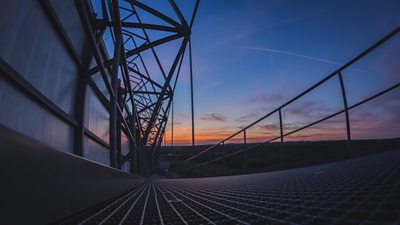
Gantries & High Level Platforms
Guidance on media positions within stadiums and arenas -

Ladders
Guidance on ladders to work up to approx. 6m high -
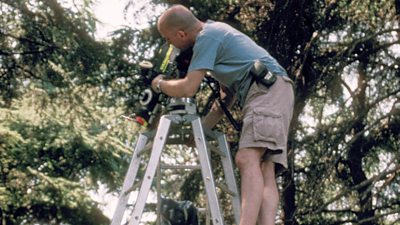
Ladder Pods
Guidance on ladder pods to work up to 5m high -
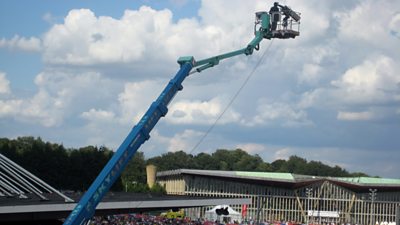
Mobile Elevating Work Platforms
Guidance on mobile elevating work platforms (MEWP) such as cherry pickers and scissor lifts. -
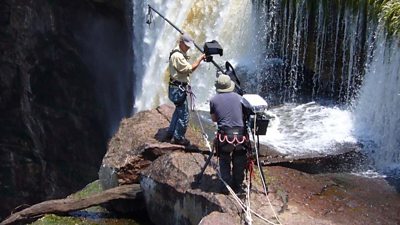
Rope Access Techniques
The equipment and techniques required to protect those working at or near exposed drops. -
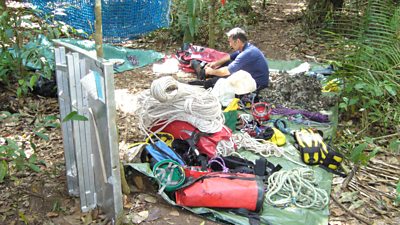
Ropes Riggers: Selection of
Competence criteria for the various professional Ropes Riggers. -
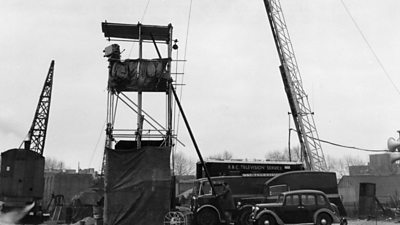
Tower Scaffolds
Guidance on tower scaffolds to work up to approx 8m high
More from SSR
-
Your platform to record accidents, risk assessments, assurance monitoring and inspections
-
Safety Equipment Stores
Just one number to call: 020 3614 5155 -
�������� Safety Guidelines
An A-Z of ��������'s Health and Safety Guidelines -
Safety Advice Line: 0370 411 0464 Email: safety@bbc.co.uk
- A-Z of �������� Safety Guidelines
- Accident Reporting and Investigation
- �������� Health & Safety Policy
- Contractors (incl. vetted lists)
- Contributors
- Fire Safety
- Freelancers
- Independent Production Companies
- Risk Assessment
- Safety Alerts
- Safety Responsibilities
- Safety Training
- Sets & Premises Safety Guide
Events guidance - key links:
- Exhibitions
- General Guidance
- Indoor Location Recce Checklist
- Outdoor Location Recce Checklist
- Major Incidents & Emergency Planning
- Marketing and Promotional
- Noise Exposure
- Planning and Management
- Responsibilities
- Responsibilities Form
- Laser Lighting Effects
- Strobe Lighting
- Temporary Stages and Rostra
Health topics - key links:
- (�������� network only)
- Contributors Fitness to Participate
- Display Screen Equipment (DSE)
- (�������� network only)
- First Aid and Welfare on Location
- International Travel - Risks & Health
- Manual Handling
- Mental Health: ��������page
- (�������� network only)
- Personal Health and Wellbeing
- Pregnancy
- Psychological Trauma Support & Trauma Risk Management (TRiM)
- Tiredness and Fatigue
- Travel Health Contacts
�������� High Risk - key links:
- CBRN and Industrial Spills
- Covert Filming
- Crisis Management and Security Support
- Demonstrations, Protests and Crowds
- Disaster Coverage
- Door Stepping
- (�������� network only)
- (�������� network only)
- Public Order
- Safety Equipment Stores
�������� Journalism - key links:
�������� Productions - key links:
- Aerial Filming and Airfields
- Animals: Displaying and handling for performance
- Boats: Working on
- Children and Young People
- Driving
- Electrical Equipment and Systems
- First Aid and Welfare on Location
- Food Safety (Cooking and Catering)
- Remote Location Working
- Roads and Streets: Working by
- Security of Productions on Location
- Stunts
- Tiredness and Fatigue
- Unmanned Aerial Systems (UAS aka Drones)
- Vehicles: Recording in, from and around
- Working at Height: Mobile Elevating Work Platforms
- Working at Height: Tower Scaffolds
�������� Radio - key links:
- (�������� Network only)
�������� Security - key links:
�������� Sport - key links:
About this site
This site describes what the �������� does in relation to managing its health, safety and security risks and is intended for those who work directly for the ��������.
It is not intended to provide instruction or guidance on how third parties should manage their risks. The �������� cannot be held liable for how this information is interpreted or used by third parties, nor provide any assurance that adopting it would provide any measure of legal compliance. More information
Some links on this site are only accessible when connected to the �������� network

